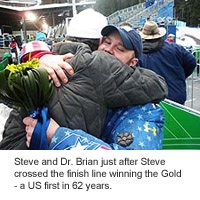How Holcomb C3-R Was Developed in Los Angeles
The first 1998 publication of crosslinking was with epithelium removal and it showed the ability to stabilize the disease, but it reported pain in recovery and corneal swelling side effects (future studies would show many more side effects from epithelium-removal crosslinking such as corneal ulcers, cornea haze, very slow recovery, partial loss of vision, etc). Nonetheless, after this publication, there was one peculiar thing: no one was performing crosslinking. The publication was out there but went largely unnoticed by the ophthalmology community and medical societies. It was the equivalent of a “silent shot in the dark.” Not one doctor around the world seemed to notice this publication in 1998, except one doctor: myself.
I was fascinated when I read this study as I was already pioneering the use of Intacs® for Keratoconus as an alternative to invasive corneal transplants that carry significant risks. After my own research into crosslinking, I quickly realized that scaping off the epithelium will cause a lot of pain during the recovery and other potential problems. I thought, “there MUST be a better way!”
Cross Linking without Surgery

After many, many nights working on this after hours, I finally discovered a method to obtain successful results. Was it possible to have a completely non-invasive, transepithelial (epithelium-on) procedure that stops Keratoconus in its tracks without the risks that epithelium removal crosslinking inherently carries? The answer was a resounding “YES!” After this discovery, I could hardly sleep that night in 2003.

I discussed with my wife Selina my excitement. On a plane flight with Selina shortly afterward, I explained the nature of the procedure and that it needed to have a simple name. It would be hard for people to say: riboflavin in the cornea for collagen crosslinking.
Comparing C3-R to Standard Corneal Cross-Linking

Since the C3-R® procedure is distinctly different from invasive epithelium removal crosslinking and other “homegrown” epithelium-on crosslinking that some other doctors are trying to do now, I wanted to be sure we protected our established crosslinking C3-R® brand that uses a proprietary crosslinking solution (that contains riboflavin and other compounds). By doing this, the proprietary C3-R® procedure could never be confused with less desirable or unproven crosslinking techniques. C3-R® now has over 10 years behind it.
Trademark: C3-R
Eventually I obtained a United States Trademark for C3-R®. Why trademark C3-R®? It’s like with Coke® that is a protected brand owned by The Coca-Cola Company. When you buy a Coke®, you know exactly what you’re getting. You know it won’t taste different from what you expect. You know Coke® is made from the secret formula locked in a vault somewhere deep in The Coca-Cola Company headquarters in Atlanta, Georgia. You know if you buy a Coke, it’s not an unauthentic knockoff from another company – they can’t call their cola “Coke” because The Coca-Cola Company owns the trademark for Coke®. People know with C3-R® they are getting the “real thing.”

On April 9, 2010, Steven Holcomb and I were on Dr. Phil’s The Doctors television show. I announced the name modification of “C3-R®” to “Holcomb C3-R®” in honor of Steven Holcomb. This marked the first time in history that treatment for the disease was named after a Gold Medal athlete who made the treatment world-famous. Because of the massive media exposure about Steven’s accomplishment and his comeback from Keratoconus, people around the world now know there are options besides invasive and painful cornea transplants.
Warmest regards,
Dr. Brian
Out-of-Town Patients
In our practice 58% of Keratoconus patients travel from out of town (including out of state and out of the country). If you are interested, Dr. Brian can provide a complimentary record review prior to you scheduling an appointment at the institute. This will not only help to determine initial candidacy but also provide you with an estimate of pricing to help you prepare financially for the trip.
How to Contact Keratoconus Specialist
A records review (for vision correction or Keratoconus procedures) is easy and the first step to improving your life. Here’s how to submit them to Dr. Brian:
Scan & E-mail
Sending By Mail
Boxer Wachler Vision Institute
ATTN: Records Review
465 N. Roxbury Drive, Suite 902
Beverly Hills, CA 90210

